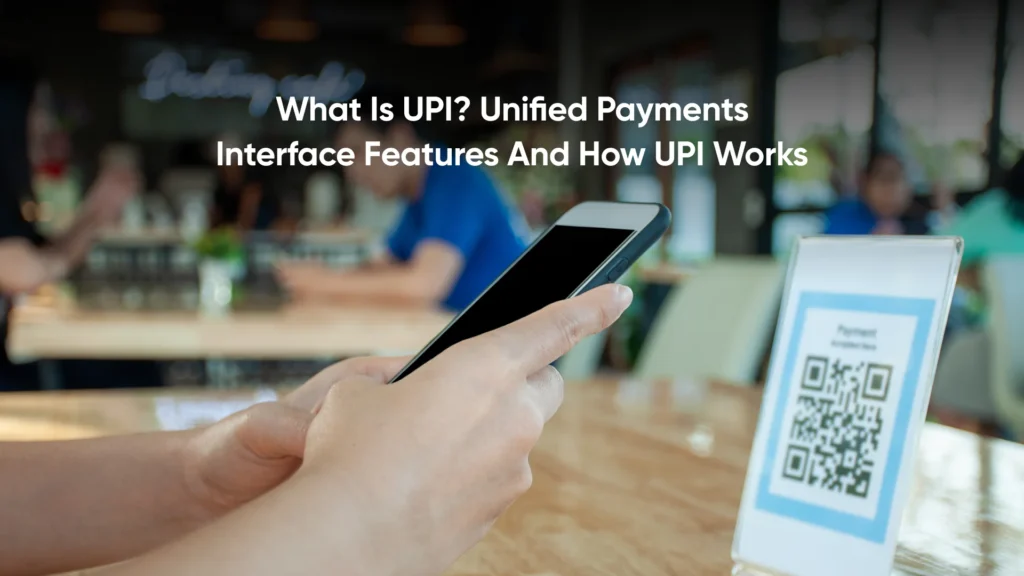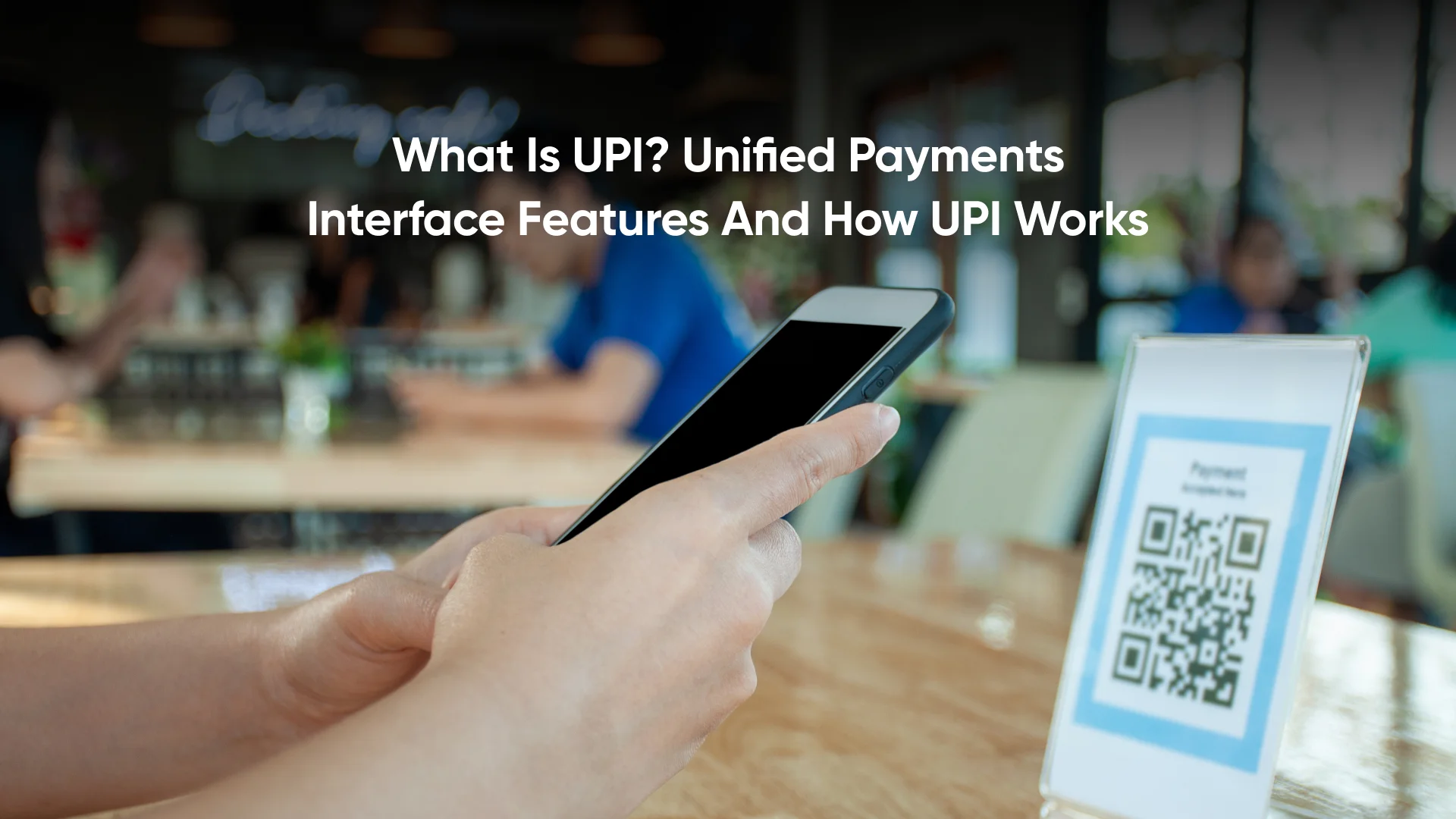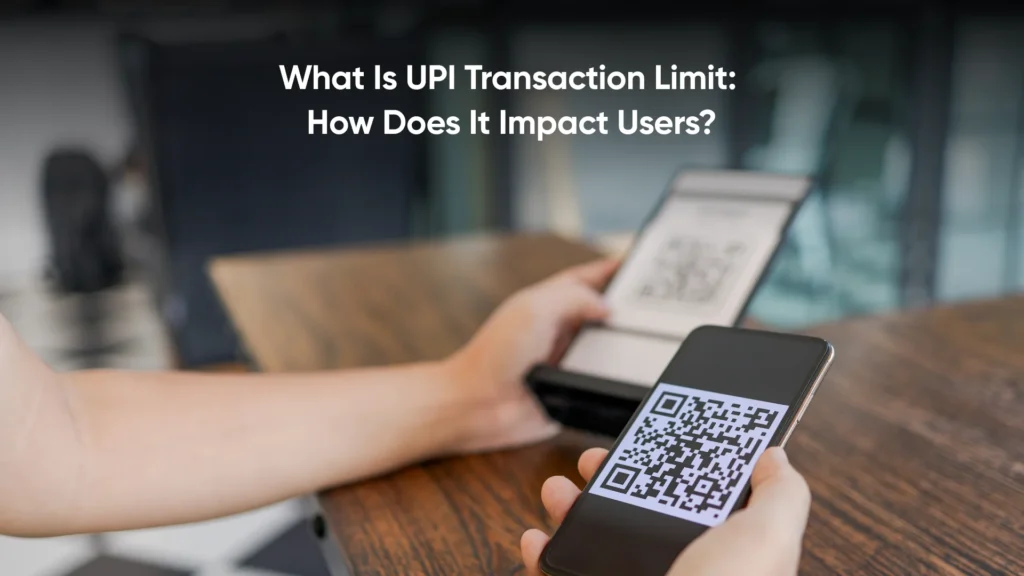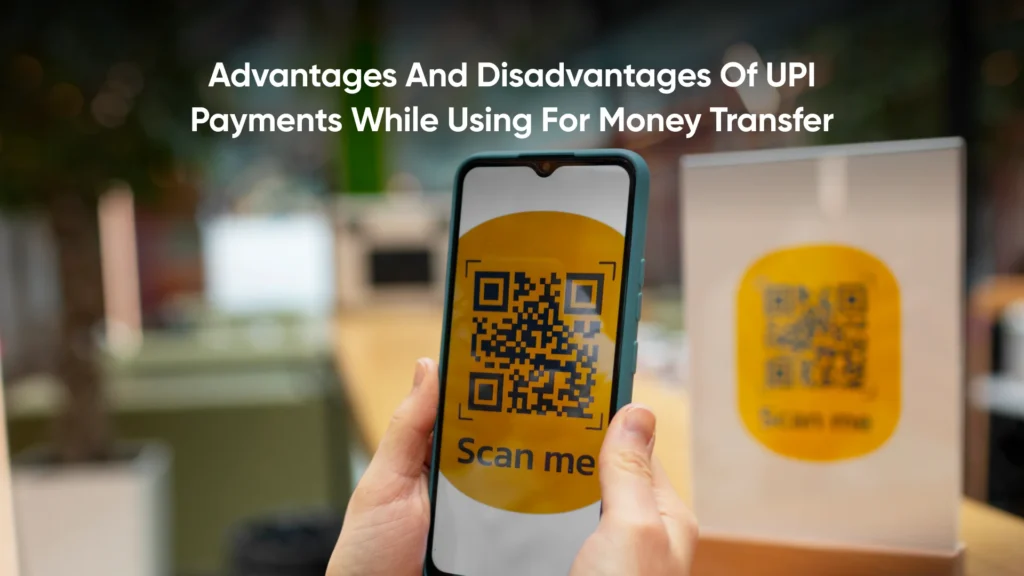What is UPI? Unified Payments Interface Features and How UPI Works

Picture this: you’re hanging out with your friends, one is shopping online, another is paying the electricity bill, all at the same time, all with one simple tap. That magic tap is UPI (Unified Payments Interface). By June 2025, UPI was powering more than 18 billion payments every month, making it the undisputed backbone of India’s cash-free lifestyle.
In this guide, you’ll see how UPI moves money between any two bank accounts in seconds, discover the standout features that make it effortless and secure, and learn why both everyday shoppers and big businesses now treat it as the go-to way to pay and get paid.
Table of Contents
ToggleWhat is UPI (Unified Payments Interface)?
The Unified Payments Interface (UPI) is a real-time payment system run by the National Payments Corporation of India (NPCI). It lets you move money between any two Indian bank accounts around the clock using a simple Virtual Payment Address (VPA) replacing long IFSC codes, account numbers, or card details.
From 21 banks at launch to 675 banks and 18.4 billion transactions in June 2025, UPI now carries the bulk of India’s retail digital payments. Newer modules keep widening access and convenience.
Launched in 2016, UPI merges multiple accounts into one app, supports peer-to-peer (P2P) and peer-to-merchant (P2M) payments, and clears funds in under two seconds even on Sundays and holidays.
In short, UPI turns every smartphone, and even basic feature phones, into a pocket-sized bank branch. It moves money safely, instantly, and at zero cost to the everyday user.
Key Features of UPI
From lightning-fast transfers to one-tap security, UPI packs a host of smart features that make everyday payments effortless. Here are the highlights you’ll notice every time you tap “Pay.”
- Instant, round-the-clock settlement: The moment you tap Pay, money is transferred from one bank to another in under two seconds, and it works 24×7, even on Sundays and public holidays.
- One app, many accounts: Link several savings or current accounts inside a single UPI app (Google Pay, PhonePe, BHIM, etc.) and pick which one to debit at checkout. No more juggling different banking apps.
- Single-click, two-factor security: UPI locks every payment to your phone (device binding) and a 4- or 6-digit UPI PIN, meeting RBI’s 2-FA rule without the slowdown of SMS OTPs.
- Push and pull payments: The same rails handle both “Pay” (push) and “Collect” (pull) requests, so you can send ₹500 to a friend or nudge them for their share of the bill with equal ease.
- Interoperable QR codes: Any UPI QR works with any UPI app, whether it’s on a chai cart or a five-star hotel counter. Just scan, pay and go
- AutoPay & e-mandates: Set up recurring debits for OTT subscriptions, insurance premiums, or EMIs once, and UPI’s AutoPay feature pulls the amount automatically on the due date.
- UPI Lite & Lite X (offline mode): For payments under ₹500, UPI Lite lets you pay without entering a PIN, and the newer Lite X even works with zero internet making it perfect for basements, trains, or patchy rural zones.
- 123PAY for feature phones: Even non-smartphone users can dial, give a missed call, or use voice prompts to send UPI payments, bringing digital payments to India’s 24 crore feature-phone owners.
Together, these features turn every phone into a pocket-sized payments hub that’s fast, secure, and accepted virtually everywhere.
Also Read: Personal Loan Balance Transfer – Check Interest Rate
How Does UPI Work?
Curious about the magic behind that instant “payment successful” ping? Let’s break down the quick, behind-the-scenes journey your money takes each time you hit “Pay.”
- Payer opens a UPI app and enters the receiver’s VPA or scans a QR.
- The app sends the request to NPCI’s UPI switch.
- NPCI asks the remitter bank to debit the payer’s account.
- On success, NPCI instructs the beneficiary bank to credit the receiver.
- Status travels back to both apps usually in under two seconds.
Benefits of UPI for Businesses
Running a business today means moving money quickly and keeping costs low, UPI delivers both. Here’s how it helps everyone from shop owners, freelancers to big brands alike:
- No extra charges: The government keeps UPI Merchant Discount Rate (MDR) at 0 %, so every rupee your customer pays lands in your bank account.
- Money arrives instantly: Payments clear in just a couple of seconds, any day of the week. That means you can restock items or pay suppliers right away instead of waiting a day or two.
- Fewer abandoned carts: Customers only need to enter a 4- or 6-digit UPI PIN, no long card numbers or OTP delays; thus they are less likely to quit halfway through checkout.
- Everyone can pay you: Anyone with a smartphone (or a basic phone) can scan your QR code and send money, giving you access to millions of shoppers across India.
- Easy repeat payments: With UPI AutoPay, customers can set up automatic payments for subscriptions or EMIs, helping you receive money on time without chasing reminders.
- Simple records: Each payment carries a unique ID that shows up in your bank statement, making it easier to match sales with deposits during bookkeeping.
In short, UPI cuts cost, speeds up cash flow, and makes life easier for both you and your customers.
Unified Payments Interface Transaction Flow
Ever wondered what happens between tapping “Pay” and seeing that green tick? Here’s the lightning-fast path your UPI payment takes, step by step.
- You enter your UPI PIN. This is your green light, like signing a cheque.
- Your app passes the baton to NPCI. The app wraps your payment details and sends them to NPCI, the central traffic controller for UPI.
- NPCI checks where to send the money. It quickly confirms the request is genuine, then tells your remitter bank (the bank holding your money) to get ready.
- Money moves, your remitter bank deducts the amount, and NPCI tells the beneficiary bank to add the same amount to the receiver’s account.
- Both apps get the result NPCI shoots back a success (or failure) message to you and the receiver. Total time: usually under two seconds.
What are the Participants in UPI (Payments Interface Transaction)
Behind every tap on “Pay,” a tiny team springs into action; apps, banks, and NPCI all play their part to whisk your money to its destination in seconds. Let’s meet each player and see what they do.
Participant | Role | Why It Matters to You |
You (the Customer) | Tap “Pay” or “Collect” in your chosen UPI app. | Start (or receive) the payment. |
UPI App (also called TPAP – Third-Party App Provider) | Friendly front-end like PhonePe, Google Pay, Paytm, or BHIM. | Let’s you enter a VPA, scan a QR code, and authorise the transfer. |
PSP Bank (Payment Service Provider) | The bank that connects your UPI app to the rest of the UPI network | Provides the tech rails and UPI “handle” (e.g., @axisbank). |
Remitter Bank | Holds the payer’s account and deducts the money. Often the same as the PSP bank for that user. | Makes sure you actually have the funds before sending. |
Beneficiary Bank | Holds the receiver’s account and credits the money. | Delivers the amount instantly to the person or business you’re paying. |
NPCI (National Payments Corporation of India) | Central switch and traffic controller for all UPI transactions. | Checks each request, routes it to the right banks, and confirms success or failure, usually in under 2 seconds. |
Merchant (for shop payments) | Store or service provider showing a UPI QR code. | Receives instant confirmation that your payment went through. |
RBI & Government | Set security rules, limits, and fees (currently zero MDR for most purchases). | Keep the system safe, low-cost, and available 24×7. |
List of Major UPI Apps And Their Respective Sponsor Banks
UPI App | Year Launched | Main Sponsor (PSP) Banks* | Highlights |
PhonePe | 2016 | Yes Bank, Axis Bank, ICICI Bank | All-in-one hub for payments, investments, and bill-splitting. |
Google Pay (formerly Tez) | 2017 | HDFC Bank, ICICI Bank, Axis Bank, State Bank of India | Let’s you pay contacts straight from your phonebook. |
Paytm | 2016 | Axis Bank, HDFC Bank, SBI, Yes Bank | Combines wallet, merchant QR, and UPI in a single app. |
Amazon Pay | 2019 | Axis Bank (plus RBL Bank & Yes Bank as backup) | One-tap checkout for Amazon orders and everyday bills. |
BHIM (NPCI) | 2016 | Multiple partner banks via NPCI | Minimal, no-frills app, great for first-time UPI users. |
*Note: Sponsor or PSP (Payment Service Provider) banks give each app its gateway to the UPI network. Most apps keep at least two PSP partners so payments keep flowing even if one bank goes offline.
Conclusion
UPI has quickly become India’s digital backbone. With instant settlement, bank-agnostic QR codes, and zero merchant fees, it keeps scaling month after month while staying simple enough for anyone with a smartphone. One quick tap and you’re done, whether it’s ₹20 for a chai or ₹2 lakh from an online customer. No card numbers, no bank queues, and no extra fees eating into your budget. It’s fast, secure, and accepted almost everywhere you look. So, the next time you need to pay or get paid, open your favourite UPI app and let India’s digital backbone do the heavy lifting.
Frequently Asked Questions
UPI (Unified Payments Interface) is an NPCI-run system that lets you send or receive money instantly, 24×7, using a simple virtual ID or QR code instead of bank details; once you enter your UPI PIN, funds move between the two linked bank accounts in seconds.
Yes, payments require device binding plus a 4 or 6-digit UPI PIN, and each transfer is encrypted and authorized through NPCI, making it as secure as net-banking.
Download a UPI app (e.g., PhonePe, Google Pay, BHIM), verify your mobile number, choose your bank, create a UPI PIN by entering your debit-card details once, and you’re ready to pay or collect.
NPCI allows up to ₹1 lakh per day and 20 transfers per account by default, but many banks now permit single transactions up to ₹2 lakh; check your bank’s specific cap in the app.
Popular options include PhonePe, Google Pay, Paytm, Amazon Pay, BHIM, and most major bank apps like SBI YONO and HDFC PayZapp.
No. UPI is the underlying payment network, while Paytm is a mobile app (and wallet) that offers UPI services along with other features.
Most users can send up to ₹1 lakh in 24 hours by NPCI rule; some banks extend this to ₹2 lakh for verified users.
“Best” depends on your needs: PhonePe and Google Pay excel at peer payments, Paytm adds a wallet and bill-pay extras, while BHIM offers a simple, no-frills interface.












